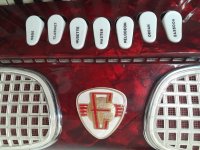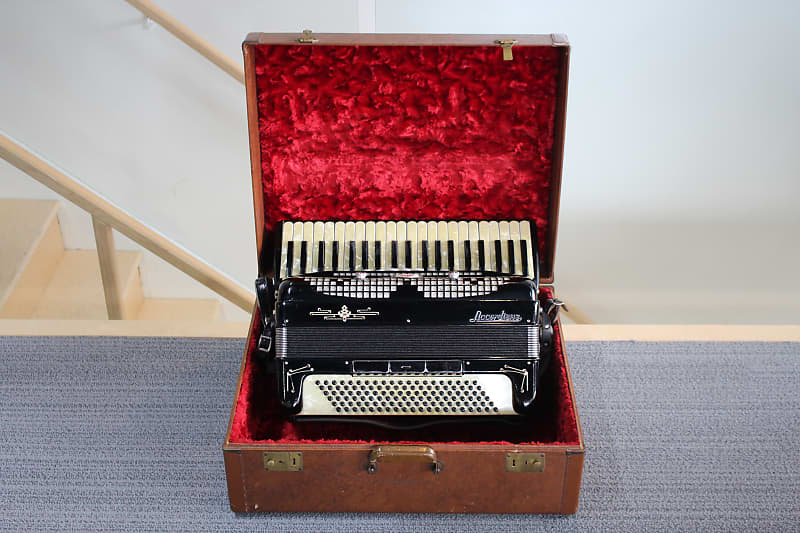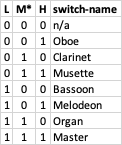Well, I think this is still a bit of a puzzle. I like puzzles - I'm a nerd, and like to understand things, and am trying to learn about accordions, so I apologise if I seem to be flogging a dead horse.
Let's assume this is a 3-reed instrument - which seems likely - providing seven possible voices. The musette voice implies one set of reeds is 'off-tune', either a second M set, or an H set. Let's call them M* and H* for convenience.
Let's dispose of the 'Bassoon', 'Clarinet', 'Master' and 'Musette' voices, whose reeds are obvious, for both LMM* and LMH* configurations, assuming a credible 'pseudo-musette' can be provided by MH* (and why not?). In an earlier post, I asked about this possibility - from a theoretical standpoint - before I was aware of this accordion. There wasn't much enthusiasm for the idea though...
Two of the three remaining voices, 'Organ' and 'Melodion' are presumably therefore LM and LH* (in a LMH* set), or LM and LM* (in a LMM* set), if 'Melodion' implies a degree of tremelo - but 'Organ' is characteristically LH, isn't it?
That leaves 'Oboe' as a single-reed voice, either M* or H*. So you end up with either a half-hearted, pseudo-musette plus an out-of-tune piccolo, called 'Oboe', or a 'proper' musette plus an out-of-tune clarinet, called 'Oboe'. Neither seems very convincing, but the second perhaps more so...
I also asked whether labelling the box 'Excelsior' implied that it was a superior version of the commoner(?) Accordiana model 312. Or was it just an example of badge-engineering?







